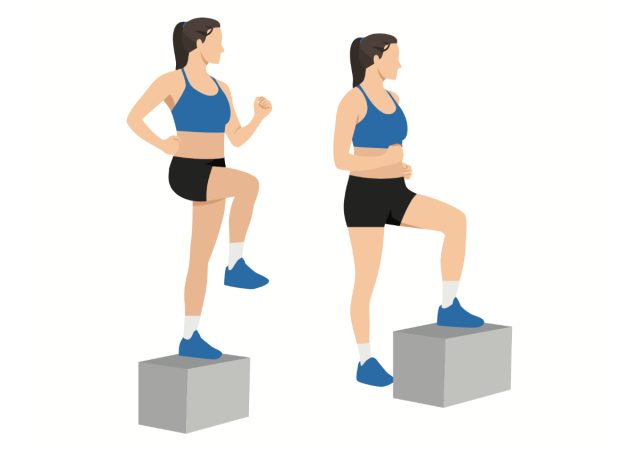The Best Exercises To Regain Balance After 60
As you grow older, your physical fitness begins to deteriorate if you don't take action to preserve it. Research actually shows that your balance starts declining once you reach midlife, around 50 years of age. In one study, for instance, adults aged 50 were able to balance on one foot for 45 seconds. Adults aged 70 were able to hold that balance for 28 seconds, and individuals aged 80 and over were only able to manage the balance test for less than 12 seconds. In order to keep up your fitness, we've rounded up the best exercises to regain balance after 60. Your overall health and independence depend on it!
Many individuals in their 50s and 60s who don't lead an active lifestyle lose lean muscle mass, strength, and stability, which can increase their risk of injury, whether it's from picking something up improperly, or falling and not having the balance or strength to catch themselves. This is why it's so important to stay active throughout your life so that you can enjoy a good quality of living, stay injury-free, and enjoy the activities you love most.
If you're trying to improve or regain your balance, you need to be performing core and lower-body strength training. If you're not sure where to begin, we've rounded up the best exercises to regain balance after 60, so read on.

Begin this first exercise by holding a dumbbell to your heart's center while maintaining an upright posture. Keep your core tight, push your hips back, and squat down to parallel. When you hit parallel, push through your heels and hips, flexing your glutes and quads to finish the motion. Perform three to four sets of 10 to 12 reps.
Step-ups start by placing one foot on a sturdy urface or workout bench. Keep your chest tall and your core tight as you lean into the heel of the front leg, pushing off of it to step onto the surface. Flex your quad and glute at the top of the movement, then, with control, lower yourself before performing another rep. If it's easy with your body weight, you can make it more challenging by holding a pair of dumbbells. Perform three to four sets of 10 reps for each leg.

For split squats, assume a staggered stance, placing one foot forward and one foot behind you. Keeping your chest tall, slowly lower down until your back knee touches the ground. Get a solid stretch in the hips of your back leg, then push through your front heel, flexing your quad and glutes. Just like the step-ups, if this exercise doesn't feel very challenging, then you can hold a pair of dumbbells. Perform three to four sets of 10 reps for each leg.

Side plank hip lifts will have you setting yourself up against a wall with your heels, butt, and shoulders touching it. Align your shoulders with your wrists, and stack your feet on top of each other. Keep your core tight and your glutes squeezed as you tilt and flex your hips straight up and down, maintaining tension in your obliques. Perform three to four sets of eight to 10 reps for each side.

The plank to pushup starts out in a forearm plank position with your back and core tight and your glutes squeezed. Push yourself up with one hand, and then finish with the other to get into a pushup. Return to the plank position, and then start the movement with the other arm, alternating between your planks and pushups. Perform three to four sets of three to five reps for each arm.
